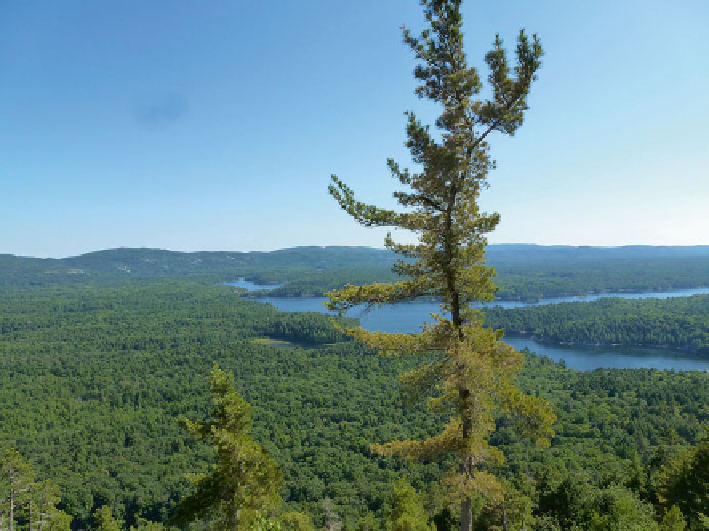Geoscience Reference
In-Depth Information
Fig. 18.1
View of forest in Killarney Provincial Park, Canada, in July 2012. Most of eastern
Canada experienced drought conditions during this time, with extreme heat and little rain, but tree
mortality is not immediately evident (CBC
2012
)
variables, the immediate response of individual trees, or long-term changes in
community composition, can be used as bioindicators. Many tree species shed
leaves during a drought, reducing transpiration and photosynthesis, and adjust
partitioning of resources to roots and storage (McDowell et al.
2008
). Drought
“weakens” trees and makes them more susceptible to insect attacks and patho-
gens (McDowell et al.
2008
). Thus, tree mortality is also associated with drought
and heat stress (Martínez-Vilalta et al.
2012
).
Worldwide there have been 88 well-documented episodes of drought-related
tree mortality over the past 30 years. However, our ability to predict which forests
(and under which circumstances) are vulnerable to die off is limited due to lack of
understanding of the physiological mechanisms leading to drought-induced tree
mortality. Understanding of plant carbon balance, carbon storage, plant water rela-
tions, and whole tree coordination needs further research before predictions can be
made (Ryan and Way
2011
). Different species may have different response thresh-
olds. A study of mortality rates of pines and oaks found that pines responded to
drought while oaks did not, and older and denser stands of trees were more sus-
ceptible to drought damage (Klos et al.
2009
).
Even if specifi c tree species are validated as drought bioindicators, their utility
for early warnings may be limited. Tree mortality occurs during, or after, a drought
(see Fig.
18.1
). To be useful for early warning, particularly sensitive species will

Search WWH ::

Custom Search